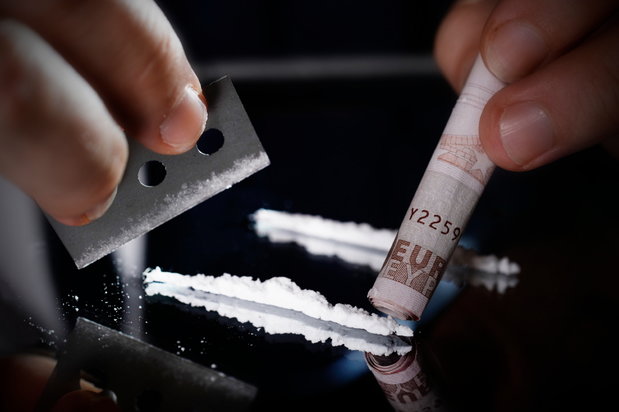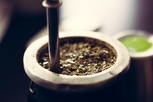Cocaine is derived from the coca plant. This plant can be found primarily in South American countries, along the range of the Andes Mountains. Used for centuries by the natives of that region, who chewed the leaves of the plant, it was first processed for medicinal purposes in 1850. Processed cocaine is synthesized into crack cocaine by mixing it with sodium bicarbonate, or baking soda.
Crack users come from every walk of life. While movies and other media may spread the myth of the “crack addict” and other stereotypes, it is widespread in use, amongst all age groups. There is no typical crack user.
Crack is made into a rock-like form when processed. Users smoke this rock in a small pipe, usually made of glass specifically created for this purpose. Others may fashion homemade pipes, but glass is the preferred material for smoking crack.
Widespread use of crack became popular in the 1980s. Users are not as abundant among the teen population as they once were. This is thought to be attributable to the creation of new designer drugs that teens are more likely to experiment with. Drug culture in the Western world seems to need to re-invent itself with each generation, creating new drugs of experimentation along with new language, music, cultural trends.
Effects of Crack
Crack cocaine is a faster acting and shorter lived high than the high attained from when snorting cocaine. While the effects of crack last only 5-10 minutes, they are very intense. The sudden onset of pleasurable sensations brings the user a high more pleasurable than the high produced by most drugs of abuse. The user experiences a floating sensation in the body, along with heightened awareness and increased heart and pulse rate. The user typically feels invincible, elated and energetic, and may become talkative, creative and happy.
Short term effects wear off quickly. However, most users enjoy the euphoric feeling of crack so much that they return to the pipe again and again. Users do not enjoy the depressed state that follows the crack high. Many users can function at a moderate level of use for some time before they begin the cycle of addiction that destroys all pleasurable feelings and becomes addiction.
Effects on the body of the user are numerous. They experience increased adrenaline and heightened sexual stimulation, along with decreased appetite and insomnia. Some users stay awake for long periods of time and smoke crack incessantly. They are doing serious damage to their lungs, mouth and throat with the toxic fumes and smoke of crack, as well as to their Central Nervous System (CNS) with the drug itself. The brain of the user becomes hyper-stimulated in the area of the pleasure center, which produces large quantities of dopamine with each hit. Stability of dopamine production may take up to a year to restore after quitting crack.
Long term users are in danger of physical ramifications of crack use. One disease, called “crack lung,” is caused by consistent constriction of the blood vessels in the lungs. Other dangers are cancer of the mouth, throat and lungs, caused by the toxic smoke of crack. Other health problems include heart and cardiovascular damage from repeated increases in heart rate and stress. Crack users are subject to dangers due to the manufacturing process, which is often done in unmonitored home laboratories where chemical compounds may be used to adulterate crack. These chemicals produce serious side effects and even death. Health risks exist for those who manufacture crack, as well as for those who share crack pipes, including the transferring of viral infections and other contaminants.
How Addictive Is Crack Cocaine?
Opinions on crack's addictive properties vary. While one report states that 1 in 4 who try crack return to use a second time, this does not tell the entire story. As with other stimulant drugs, crack is highly addictive, because its initial “hit” on the central nervous system is so intense. Some users turn to crack because its high is more intense than snorting cocaine. While users may not use regularly, dependence is developed quickly. The first use of crack can be so intense that the user returns to it in an effort to experience the high.
In order to avoid withdrawal symptoms of depression and loss of high dopamine levels, use continues. When users develop tolerance and require more and more of the substance to feel the effects, the high lessens. Now using only offers a return to the state that feels “normal.” Without crack, the addict feels defeated, depleted and too depressed to function, and returns to the drug to regain feelings of mental and emotional strength and being “on top of the world.”
Crack Cocaine Overdose
Overdose can happen even for those who are experienced with this drug. Users may be used to a low-grade crack and get hold of a batch higher in cocaine content. Crack overdose can sometimes result in death. Long-term effects can lead to overdose because cumulative effects impact the heart, lungs and respiratory system.
Overdose symptoms include racing heart and mind, cold sweats, and anxiety. Symptoms can intensify into paranoia, loss of breath, convulsions, seizures and heart attack or stroke. Immediate medical intervention is necessary.
Withdrawing from Crack
When crack users stop the drug, they experience a melancholy, depressed state. The depression is created by loss of the spikes in dopamine they received from crack use. Depending on the how long and how much crack they used, their central nervous system may take up to 18 months to stabilize its natural production of dopamine.
Many addicts will return again and again to using crack because of the loss of pleasure they experience when stopping the drug. There is no physical danger to stopping use of crack, but the psychological and emotional symptoms are difficult to withstand.
Treatment for Crack Addiction
Getting professional treatment for crack is important. Users often experience hopelessness and joylessness when they stop use. Crack gave them something (intense pleasure) they feel they cannot get any other way. When addicts first stop using, they can find no purpose or pleasure in life. This will take time to heal. Treatment centers and support groups can offer tools and strategies for how to deal with withdrawing from this drug and moving on without it.
If you or someone you know is seeking help from crack cocaine addiction, please visit our directory of treatment centers or call 800-772-8219 to start the path to recovery today.








